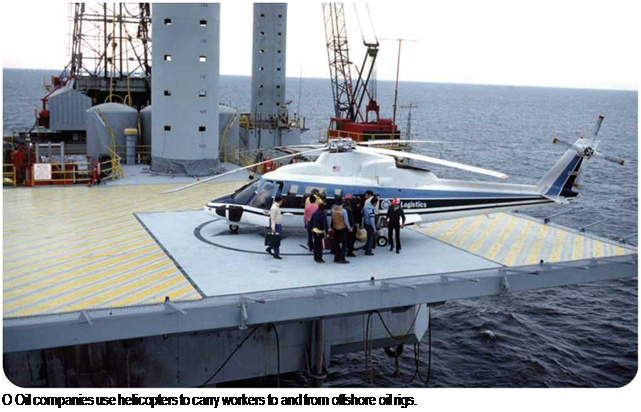Twin-Rotor Helicopters
A twin-rotor helicopter has a long, wagonlike body-for carrying passengers or
О A twin-rotor CH-47D Chinook carries a forklift as part of a recovery mission in Iraq in 2006.
cargo-and a large rotor at either end. One of the first “tandem rotor” helicopters was the Piasecki PV-3 (1945), which was nicknamed the “flying banana.” The Piasecki PV-3 was able to carry ten people at 120 miles per hour (193 kilometers per hour).
The most famous example of a twin – rotor wagon helicopter is the CH-47 Chinook. In these large helicopters, the tail rotor rotates at a slightly higher level than the front rotor. The two rotors turn in opposite directions to prevent the helicopter from spinning around in the air. These big machines are less agile
THE CHINOOK
The Piasecki company pioneered the twin-rotor wagon helicopter with the "flying banana" of 1945. Piasecki later became Vertol (1956) and subsequently merged into Boeing. Its most famous helicopter is the CH-47 Chinook. First flown in 1961, the Chinook has a top speed of about 180 miles per hour (290 kilometers per hour) and a payload capacity of 14 tons (13 metric tons). The Chinook has seen action in combat zones around the world and is one of the most versatile and hard-working aircraft in history.
______________________________________________ /
 |
than single-rotor helicopters, and pilots have to watch out that the long rotor blades do not smash into buildings or trees when flying low or landing. A variation of the twin-rotor design is the coaxial-rotor helicopter, in which the two rotors are mounted one above the other.










